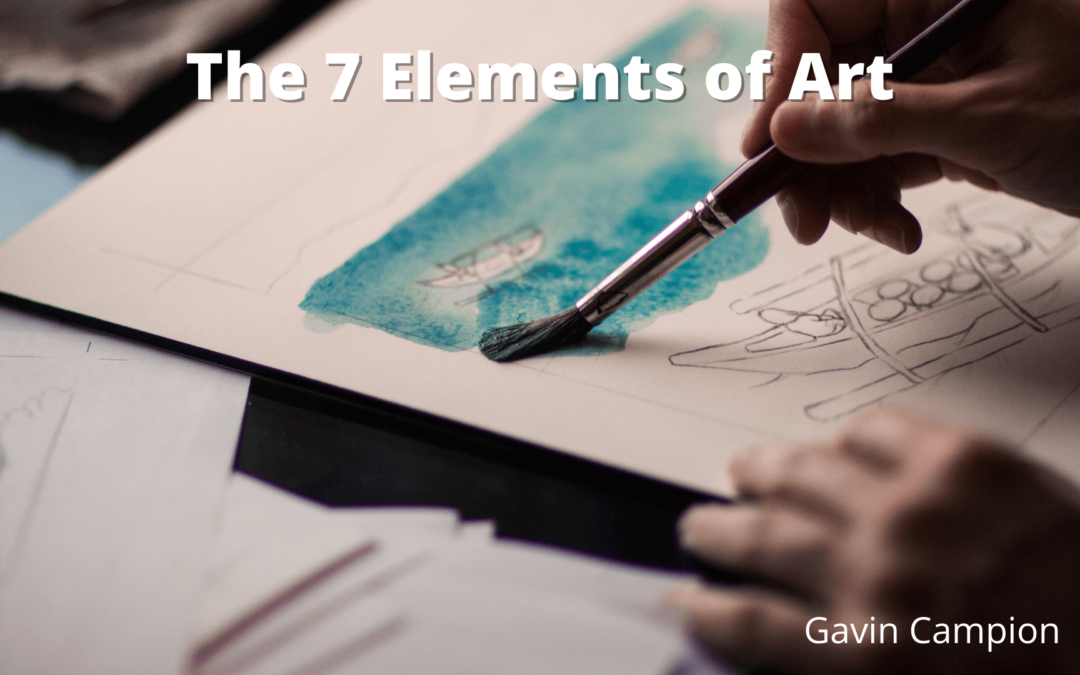Art can be analyzed in terms of 7 elements; line, shape, form, space, texture, value, and color. Every piece of art must have at least two of these elements. A painting of a surfer riding an ocean wave, for example, has lines that make up the shapes of the surfer, ocean, beach, and other objects in the scene as well as the colors of those objects.
Line is an abstract concept. It is defined as moving points. We describe the parts that make up the objects and shapes of our perception as lines. Lines also make up the symbols that we use. A line does not exist in nature. It is a word we use to make sense of what we see.
Texture is the way something physically feels. A sculpture can be smooth or rough. Texture can also be implied through the use of shading. For example, an object with consistent shading can imply a smooth texture, while one with both dark and light shading can imply a rough texture.
Form refers to the three dimensions of height, width, and volume. Because a sculpture occupies three dimensions, it will have form. Paintings and drawings can contain form in them through the use of perspective or shading. A painting of the solar system, or of a forest with mountains in the background, for example, will have the appearance of three dimensions.
Awareness of the 7 elements of art enables participation in the common language of art. This common language can facilitate understanding within discussions about art. Also, the elements condense meaning into a shorthand. Without such a shorthand, a person may only know how to express themselves with long-winded explanations. Therefore, what a person wishes to say may be awkward, difficult to understand, or even not said at all. With a shorthand, descriptions, critiques, and analyses of art can be communicated concisely and effectively.
Knowing the 7 elements can also be useful for someone wanting to create art. Taking apart an object and learning how its various parts go together can increase appreciation of that object. The same is true for art. A deeper appreciation of art can enable an artist to engineer and analytically think about their own creative process.
